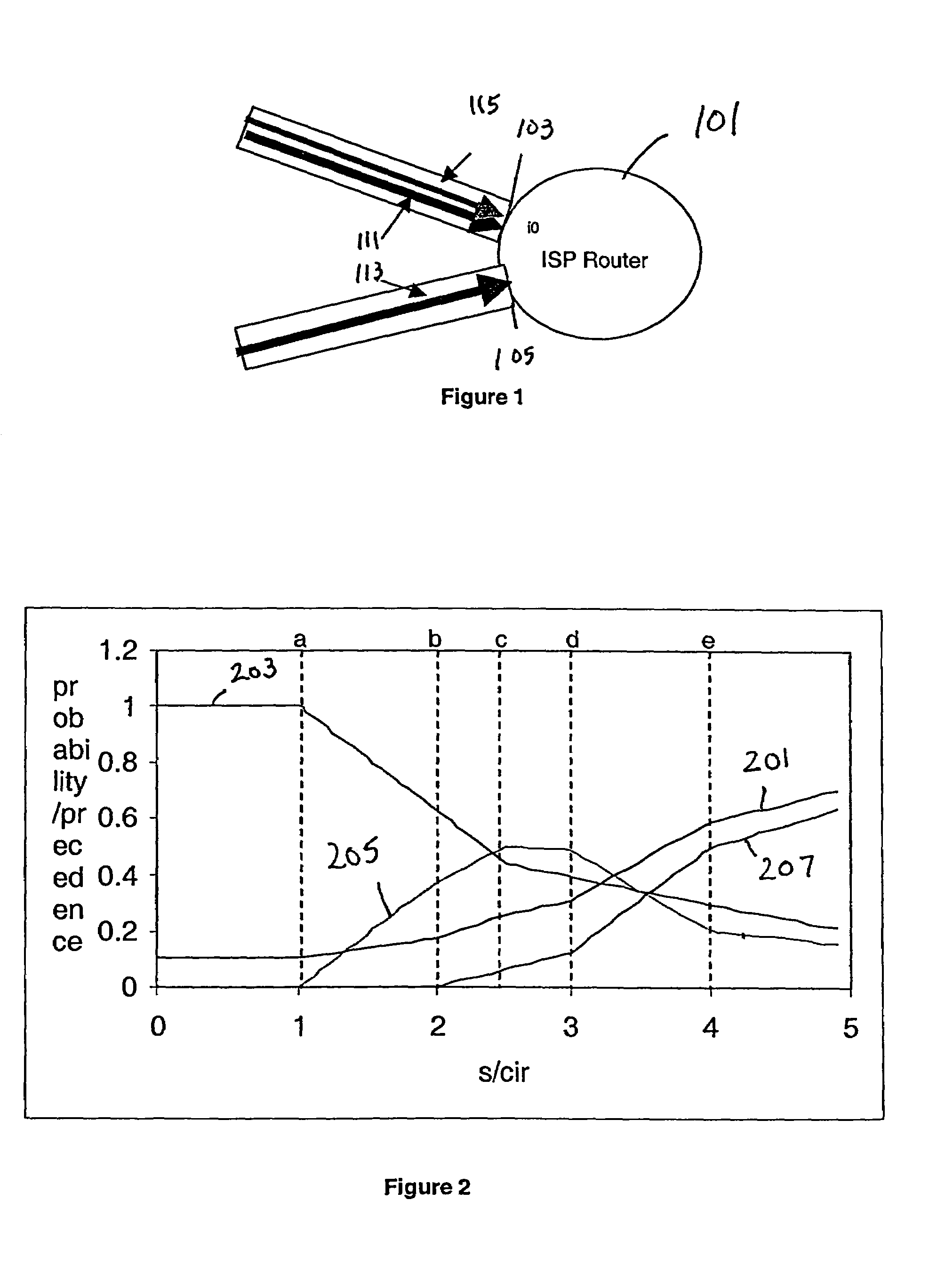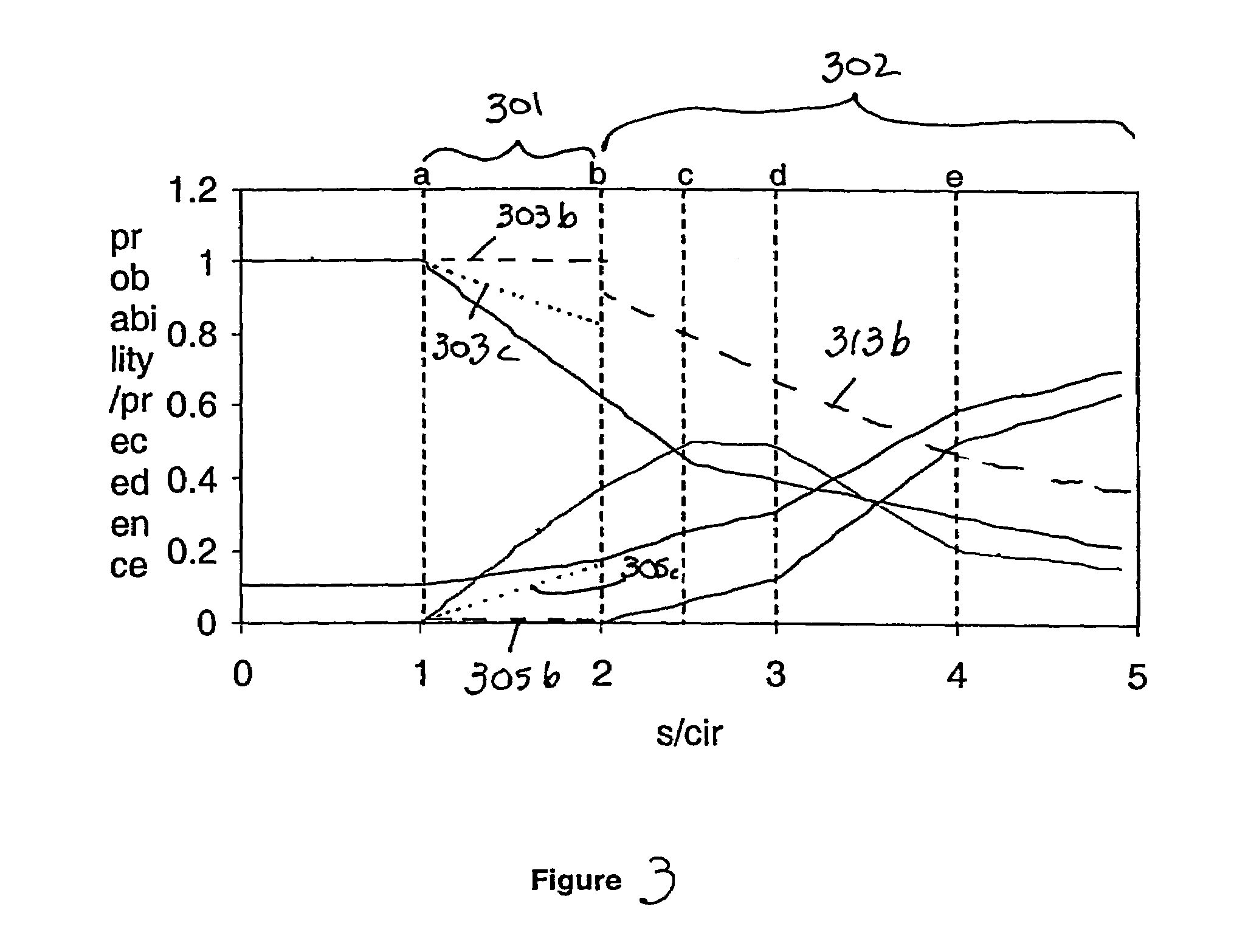Method and apparatus for random packet marking for differentiated services
a technology of random packets and services, applied in the field of routing packets, can solve problems such as dissatisfaction of users, poor single user experience, and negative impact on other users, and achieve the effect of a greater level of fairness
- Summary
- Abstract
- Description
- Claims
- Application Information
AI Technical Summary
Benefits of technology
Problems solved by technology
Method used
Image
Examples
second embodiment
[0039]If a sending rate satisfies a second burst criterion 302, the probability of marking green may decline, as sending rate increases, under a secondary function 313b. The secondary function 313b may be in proportion to the inverse of the sending rate. The secondary function may be selected by a second burst criterion, such as, upon determining that s is as large as or much larger than PIR and burst-size is above a threshold.
first embodiment
[0040]Alternatively, the random element may be removed from the decision to mark green, and the packets may be marked green at a rate not exceeding the PIR or some multiple thereof. The selection of the remaining priority levels, e.g. red and yellow, for marking could be based on the probabilities provided under the operation of the
[0041]The burst credit may be established at a level, and may be restricted to a range, wherein no bursts are accumulated above the range, and no bursts are deducted below the range. The burst-size may be incremented in a fixed chunk, or variable chunk, and the burst size may be decremented in a fixed chunk or variable chunks. A suitable chunk setting could be the difference between the sending rate (expressed in bits per second) and CIR (expressed in bits per second) multiplied by inter-pkt-time. Inter-pkt-time may be the time measured between packets received. Inter-pkt-time may be a weighted average of times between several packet arrivals. Inter-pkt-t...
PUM
 Login to View More
Login to View More Abstract
Description
Claims
Application Information
 Login to View More
Login to View More - R&D
- Intellectual Property
- Life Sciences
- Materials
- Tech Scout
- Unparalleled Data Quality
- Higher Quality Content
- 60% Fewer Hallucinations
Browse by: Latest US Patents, China's latest patents, Technical Efficacy Thesaurus, Application Domain, Technology Topic, Popular Technical Reports.
© 2025 PatSnap. All rights reserved.Legal|Privacy policy|Modern Slavery Act Transparency Statement|Sitemap|About US| Contact US: help@patsnap.com



